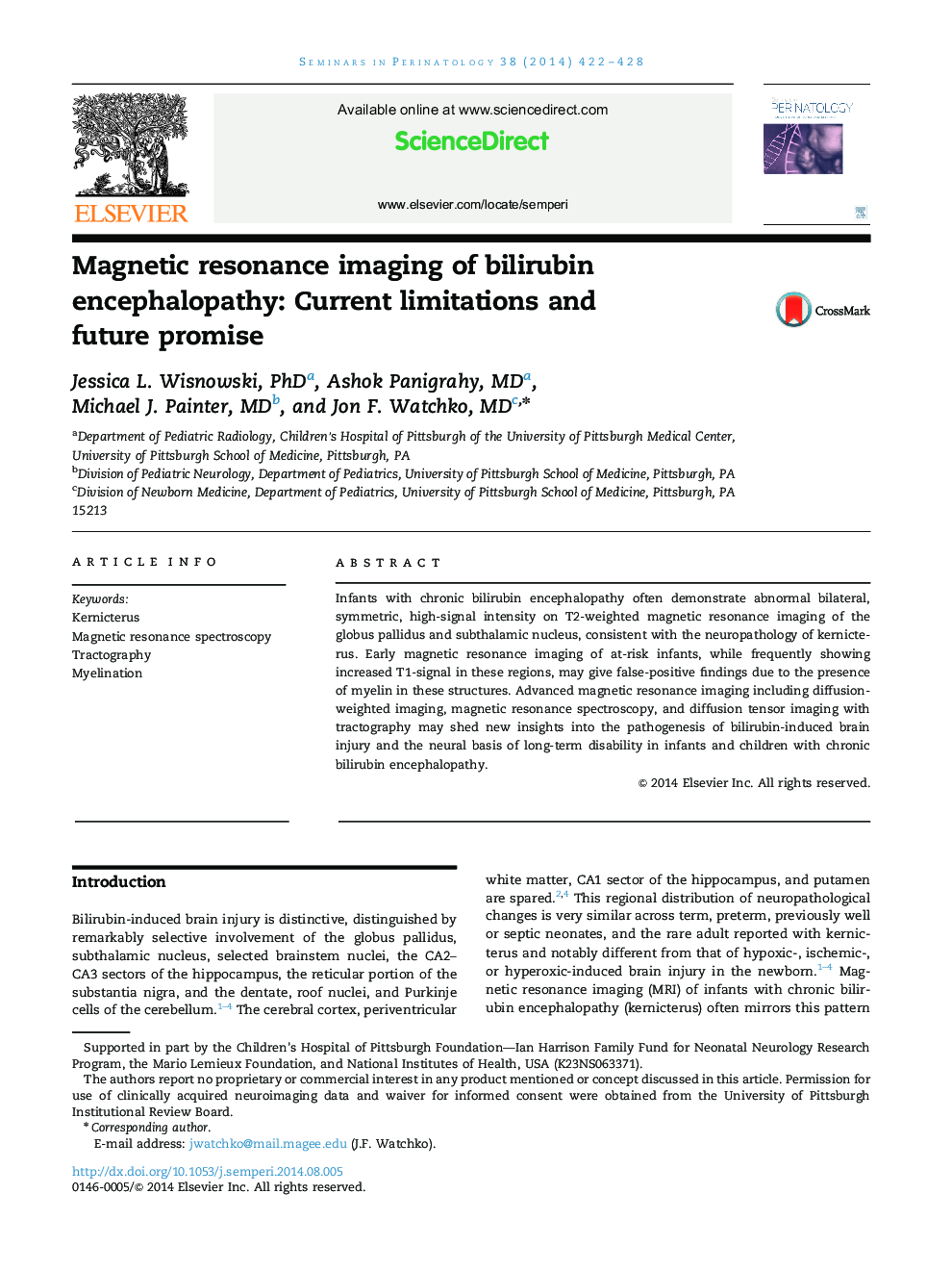| Article ID | Journal | Published Year | Pages | File Type |
|---|---|---|---|---|
| 3836379 | Seminars in Perinatology | 2014 | 7 Pages |
Infants with chronic bilirubin encephalopathy often demonstrate abnormal bilateral, symmetric, high-signal intensity on T2-weighted magnetic resonance imaging of the globus pallidus and subthalamic nucleus, consistent with the neuropathology of kernicterus. Early magnetic resonance imaging of at-risk infants, while frequently showing increased T1-signal in these regions, may give false-positive findings due to the presence of myelin in these structures. Advanced magnetic resonance imaging including diffusion-weighted imaging, magnetic resonance spectroscopy, and diffusion tensor imaging with tractography may shed new insights into the pathogenesis of bilirubin-induced brain injury and the neural basis of long-term disability in infants and children with chronic bilirubin encephalopathy.
